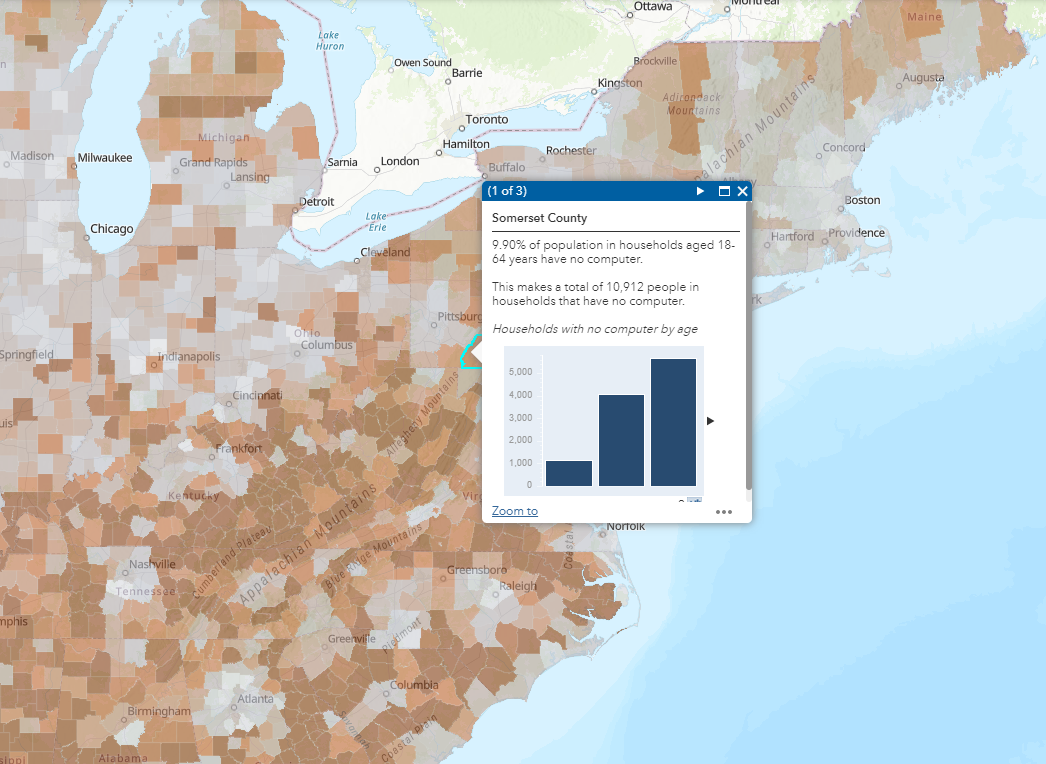What internet access do you have for virtual learning?
A study by Microsoft in 2018 estimated that about half of Americans – 163 million people – do not have high-speed internet at home.
Students in rural areas often find it impossible to connect to internet service at speeds that would allow conferencing or video streaming because internet providers haven’t extended the lines. Elsewhere, especially in urban districts with high concentrations of poor students, subscribing is too expensive. Teachers, principals and superintendents will be delivering take-home work, setting up mobile WiFi hot spots and have been lobbying their states for broadband reform. Greg Davis, President at Davis Demographics, has created a shareable Geo App that helps local leaders understand their connectivity status in the community.
Use the layer list to change the view of the map. Click on an area to see what impacts are occurring.



